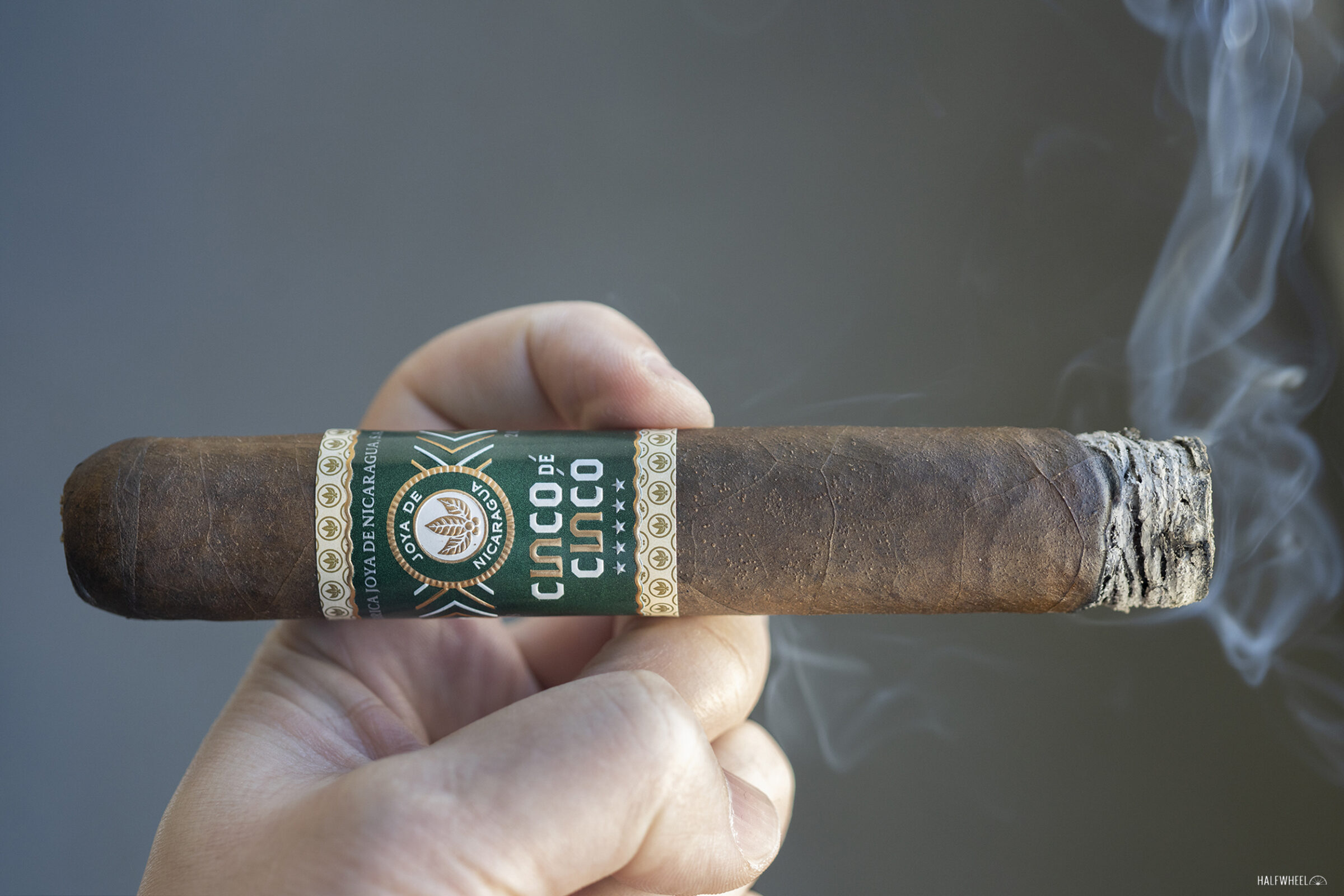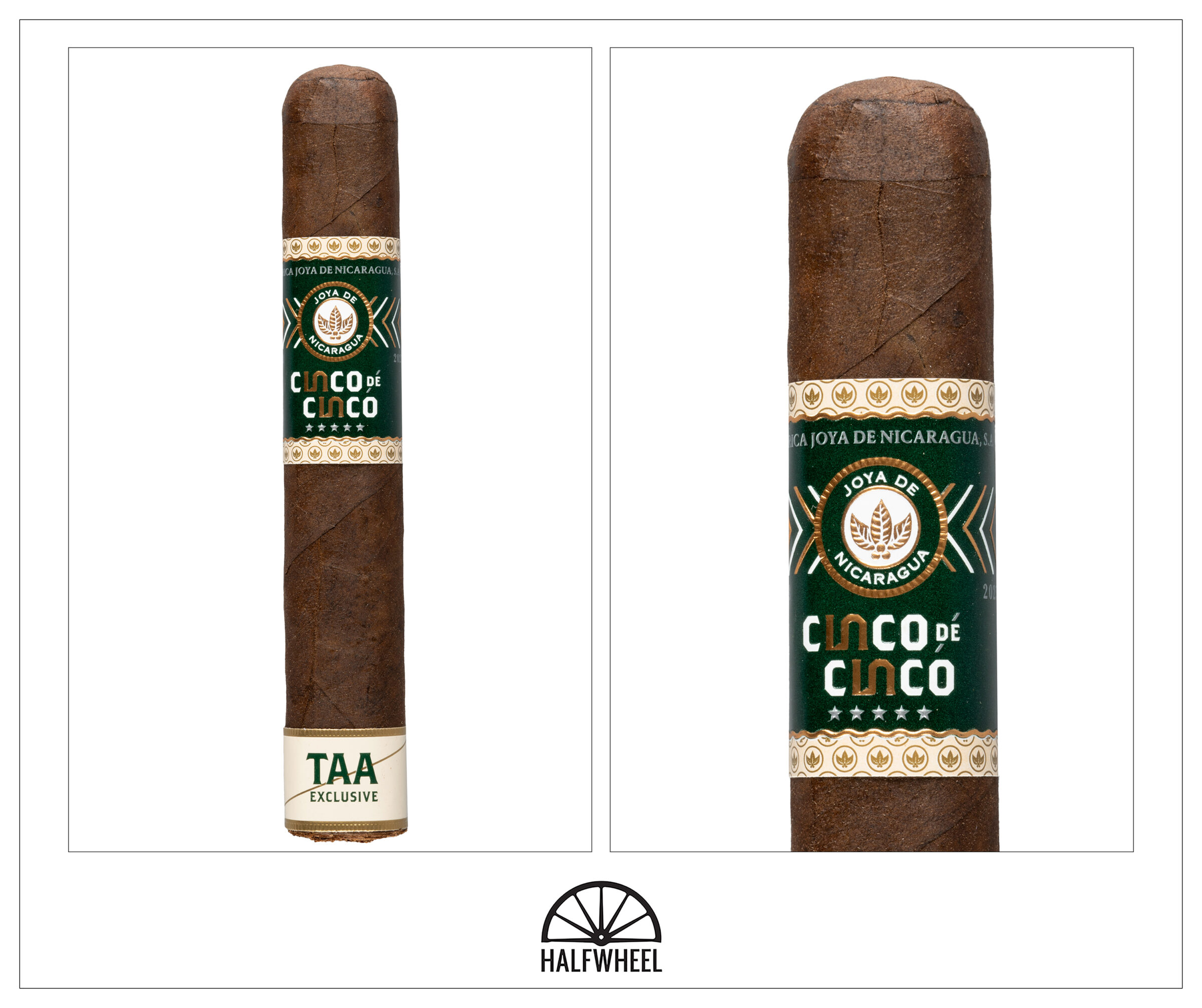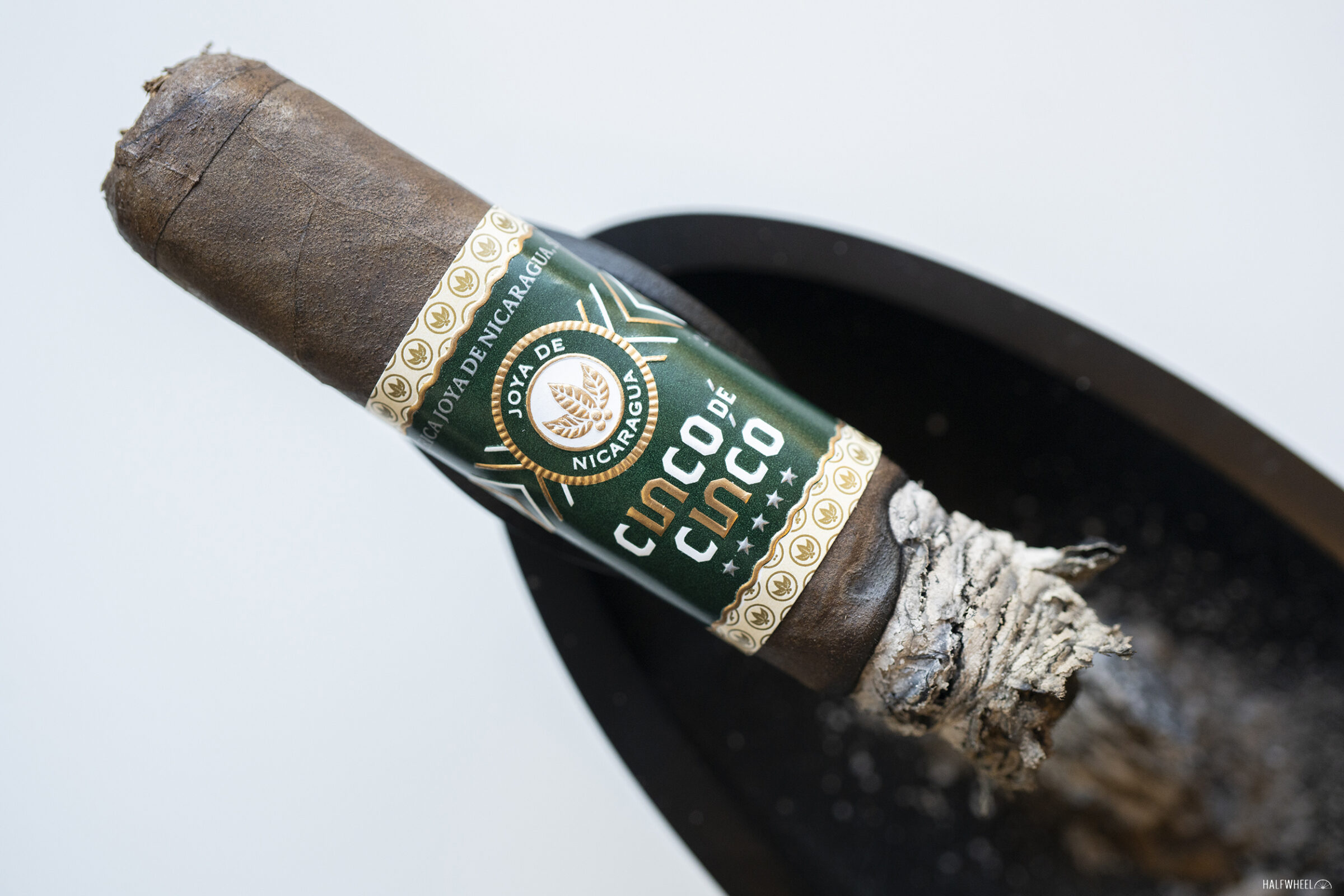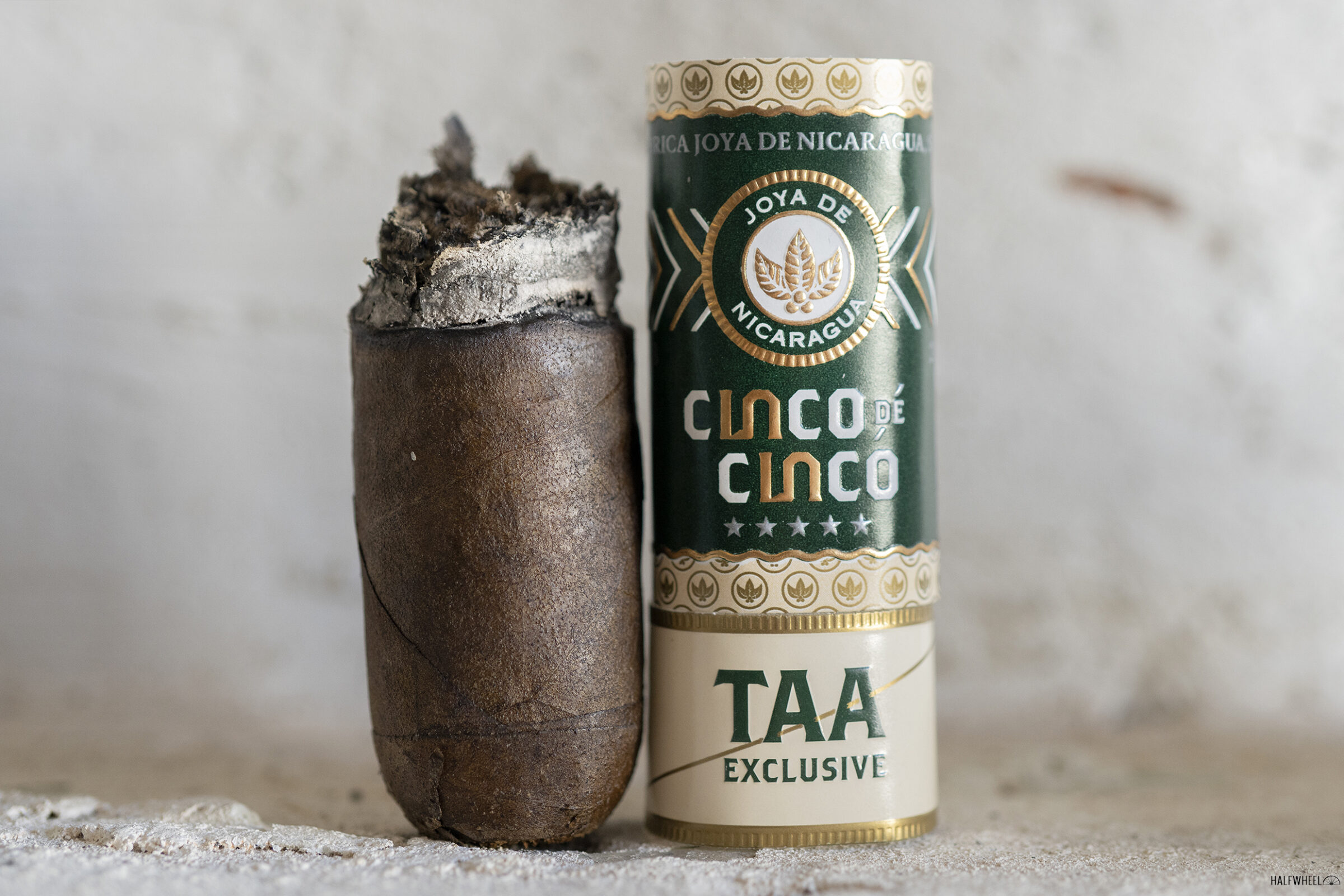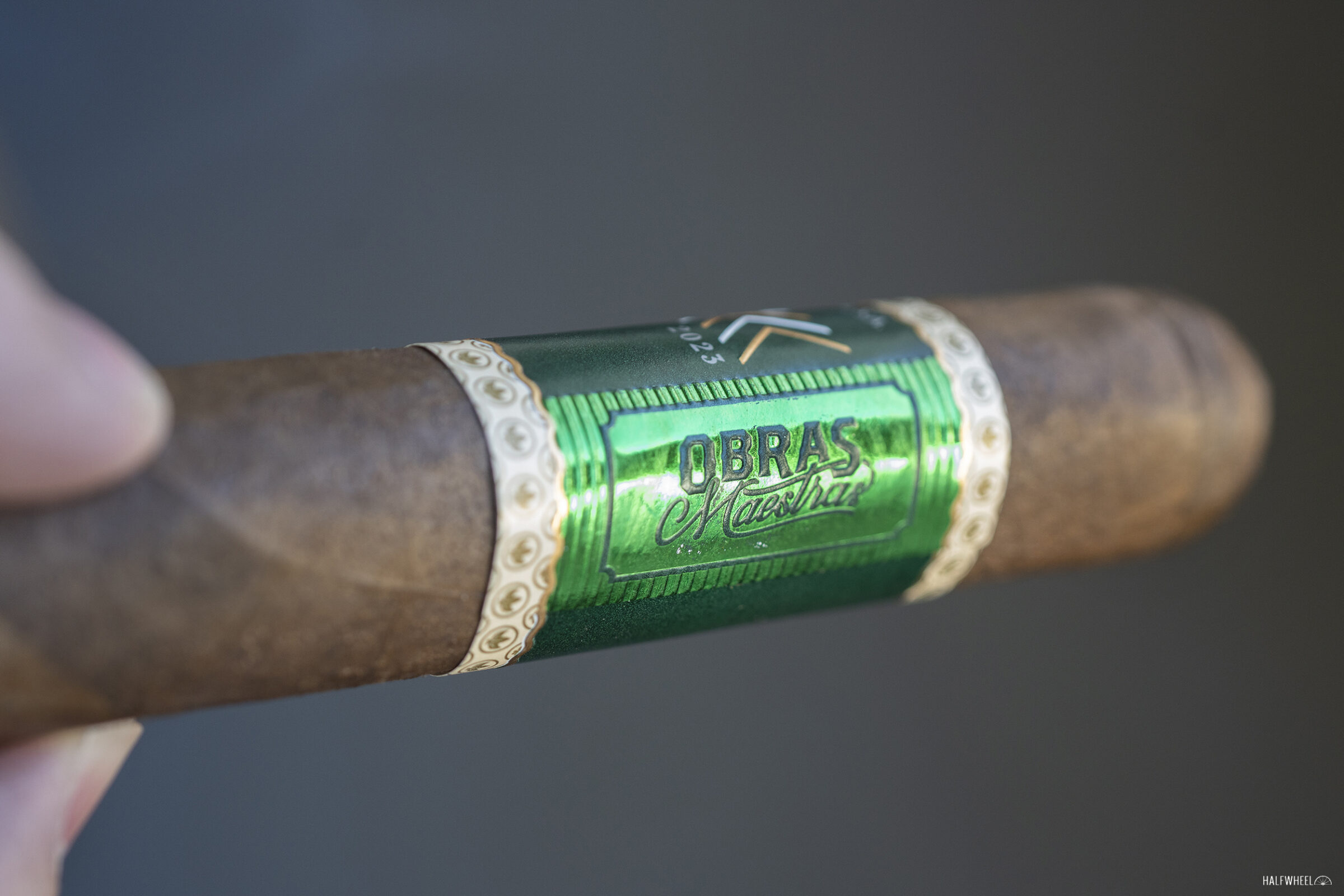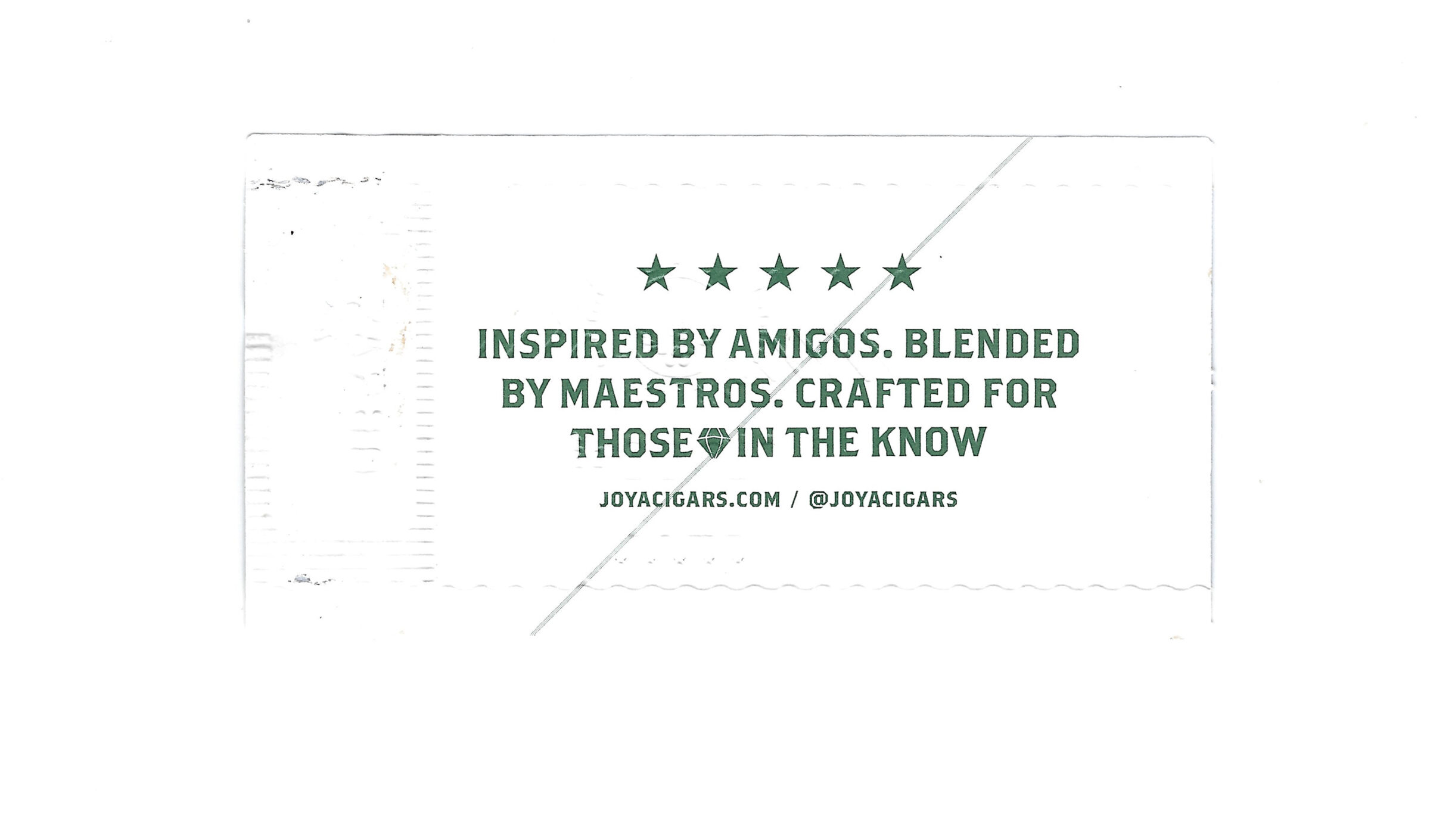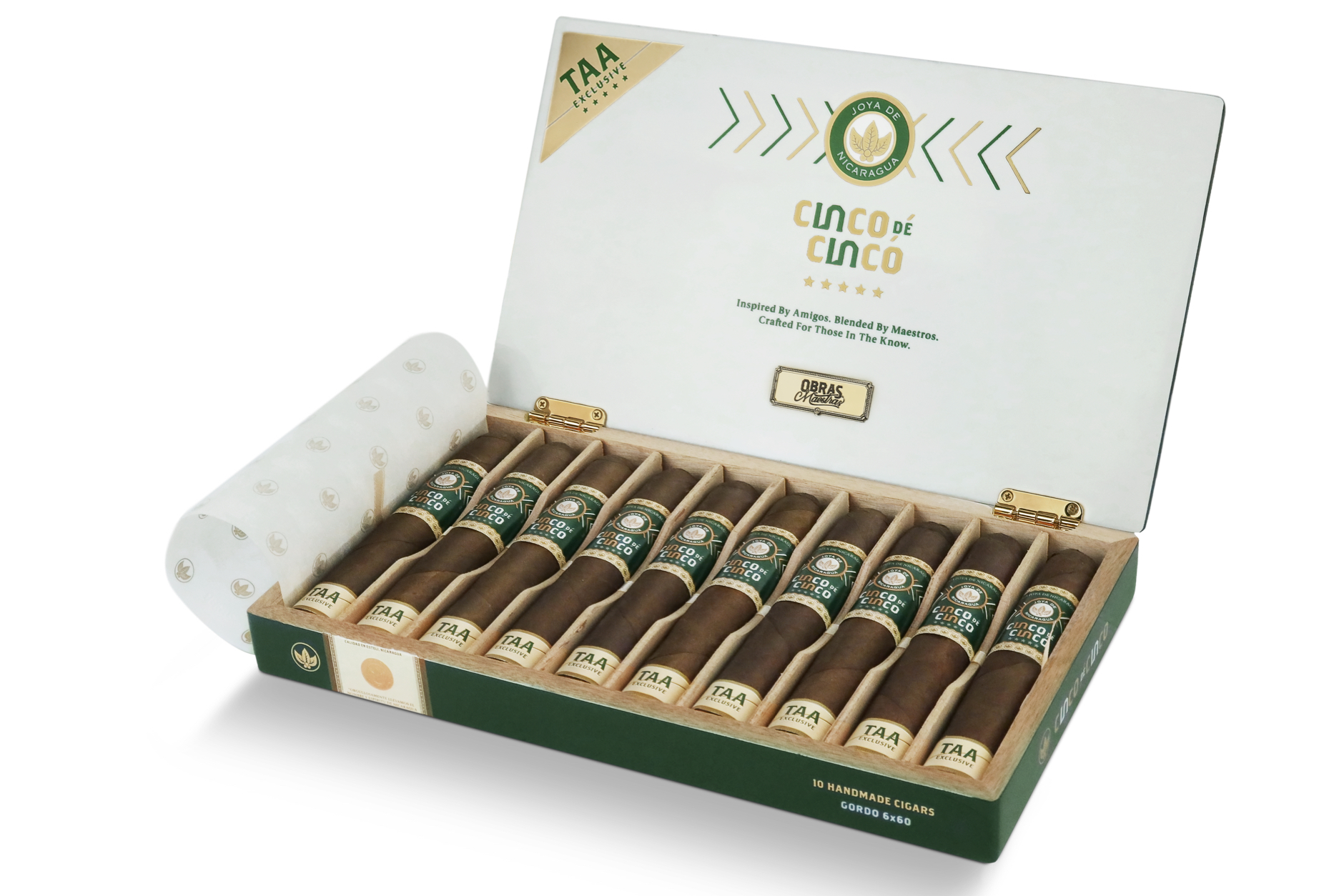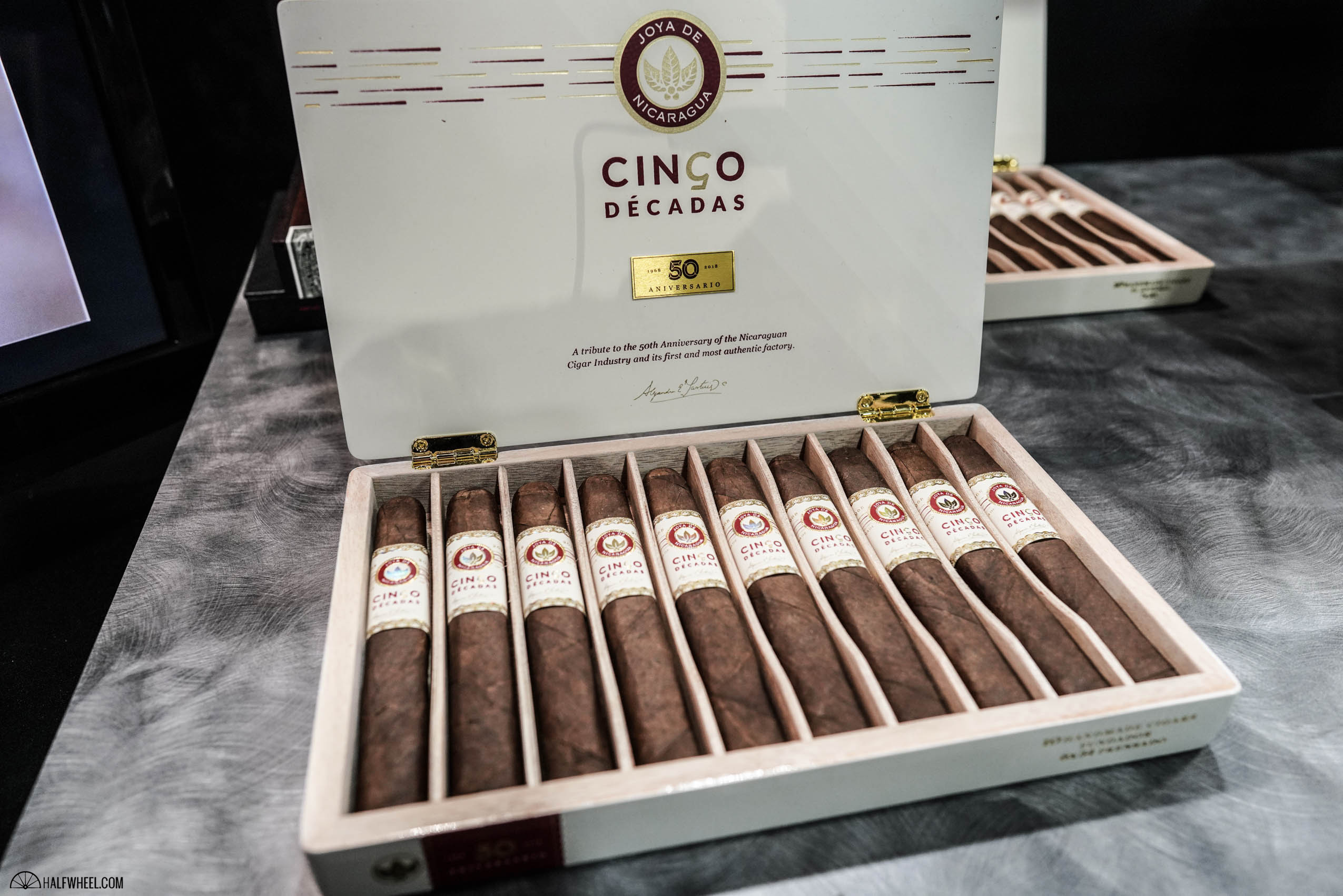It would be much more fitting if this cigar came out two years ago.
In 2023, both Joya de Nicaragua and the Tobacconists’ Association of America (TAA) celebrated their 55th anniversary. Joya de Nicaragua did it by releasing a new line called Cinco de Cinco, Spanish for five of five, and the TAA did it by having various companies release TAA 55th anniversary cigars. Joya de Nicaragua was not one of those companies, instead opting for a rerelease of an exclusive size of its Cuatro Cinco line, i.e, the company’s 45th anniversary, for its TAA 2023 exclusive.
But for 2024, Joya de Nicaragua created a Cinco de Cinco exclusive for the TAA, a 6 x 60 gordo called simply Joya de Nicaragua Cinco de Cinco TAA Exclusive. Blend-wise, it uses the same blend as the five regular production Cinco de Cinco vitolas: a Mexican San Andrés wrapper over a Nicaraguan binder and fillers from Nicaragua.
- Joya de Nicaragua Cinco de Cinco Corona Doble (7 x 54) — September 2023
- Joya de Nicaragua Cinco de Cinco Corona Extra (6 1/4 x 46) — September 2023
- Joya de Nicaragua Cinco de Cinco Toro (6 x 52) — September 2023
- Joya de Nicaragua Cinco de Cinco Robusto Gordo (5 1/2 x 54) — September 2023
- Joya de Nicaragua Cinco de Cinco Robusto (5 x 50) — September 2023
- Joya de Nicaragua Cinco de Cinco TAA Exclusive (6 x 60) — October 2024
The MSRP for the TAA Exclusive is set at $23 per cigar. Production is limited to 600 boxes of 10 cigars.
“Cinco de Cinco has been a phenomenal success, quickly becoming our most sought-after cigar worldwide,” said Juan Ignacio Martínez, executive president of Joya de Nicaragua, in a press release when the cigar was announced in October. “To celebrate this achievement with our dedicated TAA Partners and Amigos, we’ve crafted the exclusive Gordo 6×60 format. This cigar is a testament to our shared passion for excellence and the enduring legacy of TAA, an organization that has been a cornerstone of the industry for decades.”
The TAA is a membership group made up of approximately 80 retailers and roughly 40 manufacturers that gather annually to discuss issues facing the industry and retailers, as well as to have its annual trade show, a unique event that works on a group buying format in order to secure exclusive deals for these generally high-volume merchants.
During the event—which took place Oct. 20-24 in Aruba—the organization holds two selling events, one known as the Dream Machine, where the retailers collectively order to secure larger discounts, while the other is a more traditional trade show. Typically, around a dozen manufacturers release new exclusive cigars for the retail members of the organization under the TAA Exclusive Series Program (ESP) banner. Those manufacturers agree to give a portion of the proceeds to the organization, a minimum of $1 per cigar, previously 50 cents.
CLE, Crowned Heads, E.P. Carrillo, Espinosa, Ferio Tego, Gurkha, J.C. Newman, Joya de Nicaragua, Kristoff, La Flor Dominicana, Miami Cigar & Co., Oliva, Plasencia, Quesada, STG and Villiger Cigars North America all announced TAA exclusives for 2024.
- Cigar Reviewed: Joya de Nicaragua Cinco de Cinco TAA Exclusive
- Country of Origin: Nicaragua
- Factory: Fábrica de Tabacos Joya de Nicaragua S.A.
- Wrapper: Mexico (San Andrés)
- Binder: Nicaragua
- Filler: Nicaragua
- Length: 6 Inches
- Ring Gauge: 60
- Shape: Pressed
- MSRP: $23 (Box of 10, $230)
- Release Date: October 2024
- Number of Cigars Released: 600 Boxes of 10 Cigars (6,000 Total Cigars)
- Number of Cigars Smoked For Review: 3
I think that the pop of the green bands makes these wrappers seem less dark than they actually are, though I think this vitola photographs a lot closer to what I see with my eye than the thinner one Patrick reviewed. It’s not into the black or black-purple level, but dark enough that the vein structure is almost entirely hidden. While there’s some visible oil on the wrapper, I don’t find it when feeling the wrapper, which reminds me of a really fine grit sandpaper. The aromas from the wrapper are led by lots of smells that I associated with fire-cured tobacco—though not to the fire-cured level—and something that reminds me of a can of paste. The aromas from the first cigar are medium-full, though the other two cigars are closer to full. From their feet, the first two cigars smell similar: a dense mixture of muted cocoa, dried apricot, bread and some ammonia. With those two cigars—medium-plus and medium-full—it’s pretty difficult to tell the difference between the foot and the fired-cured nature of the wrapper. The third cigar completely blurs those lines and it mainly just smells like the wrapper. The first two cigars have lots of the fire-cured flavors, sitting on top of root beer, roasted wood flavors and some unique accents: menthol-like cooling on the first cigar and a flavor that reminds me of the smell of a permanent marker on the second. The third cigar is super airy with some muted Cap’n Crunch-like sweetness, a flavor that reminds me of dirty water and some chocolate syrup. Perhaps, the more open cold draw impacts the flavor of the third cigar, but it’s medium-full and lacks the fire-cured sensations altogether.
The first Joya de Nicaragua Cinco de Cinco Gordo TAA Exclusive has some of the root beer sweetness, mixed with burnt pizza crust and some pepper, around medium-full. The second cigar has acorns, salty potato chips and tartness, close to full, while the third cigar is more predictable with toastiness, chocolate syrup, earth and some dry crackers, around medium-plus. Despite all those differences, the cigars end up in a similar spot. Midway through the first third, cinnamon is the leading flavor. It tends to be more like a cinnamon candy than raw cinnamon, but both are present. Other flavors included woodiness, earthiness and some generic sweetness with underlying acidity and toastiness. The finish gets drier, which brings out both the spicy aspects of the cinnamon and some isolated pepper. Other flavors include rice cakes and grains, though I could really think some creaminess to help provide some difference. Retrohales offer some interesting flavors: mushrooms, oak, sweet tea, tree bark and nuttiness. None of the cigars have more than two or three of those flavors, but it’s a nice change of pace compared to the main flavor. They finish with some saltiness, which brings out more harshness, increases the dryness and makes the grain flavors seem a bit more herbal. Flavor is medium-full or full, body is medium-full or full and strength is medium-full. Construction is great on each cigar, though the ash is quite flaky.
Unfortunately, the dryness only builds. The good news is that it stalls out right after the halfway mark, but the bad news is that it seems to be sucking a lot of nuance out of the profile. There’s a variety of woody flavors—oak and campfire stand out—mixed with some sweetness, saltiness and a cinnamon that goes in and out of the profile. Each cigar is a bit different: the first retains sweetness more consistently, the second has some metallic aspects on the side of the tongue and the third has some much needed creaminess. Oftentimes, the finish is just a more intense version of the main flavor, other times it’s more of a reduction in flavors which leads to the saltiness and spicy flavors—both pepper and cinnamon—seeming sharper. Retrohales provide some of the sweetness that I was missing in the first third. It’s typically a generic sugar flavor before cardboard, damp wood and toastiness take over, the latter really seems to halt much of the nuance from immediately developing. The finish reminds me of a pretty common steak preparation for me, though without the meatiness: toastiness, burnt oregano and then some nuttiness. Flavor is medium-full, body is full and strength is closer to full. Construction remains good, though the second cigar struggles enough to warrant a touch-up. All three cigars have a flaky ash and the burn lines aren’t going to win any awards for their appearance.
While the dryness fortunately stalls, the toasty flavor has increased and is becoming more of a charred flavor, like the burning embers of wood more than the toastiness of bread. The other woody flavors stick around, the strongest flavor on all three cigars. While there are times when some other flavors like a burnt caramel, strawberry jam and the cinnamon separate themselves, oftentimes the profile is very intertwined and makes it difficult for me to detect the nuance. The finish has plenty of flavors—leather, nuttiness, white pepper, saltiness and some cinnamon—but the dryness is increasing, and again, I find myself pondering some sweetness or creaminess to break through. Earlier, retrohales of the Cinco de Cinco would be the cure for this, but that’s not always the case at this point. Sometimes it’s white pepper, cinnamon and sandalwood leading some herbal flavors. During the second cigar, I find cinnamon and white pepper before some nuttiness and sweetness take over and then an egg bagel-like flavor. “This is what I wish the main flavors tasted like,” is written down in my notes. Flavor is full, body is full and strength is full. The second and now third cigars need touch-ups to deal with the combustion.
Final Notes
- Joya de Nicaragua says this blend was developed through feedback performed at hundreds of its blending sessions.
- The second cigar’s final third was what prompted that “this is what I wish the main flavors tasted like” line. It was difficult to score. On one hand, when I wasn’t retrohaling, it was probably my least favorite third of any of the three cigars. However, the retrohale of the final third was the best part of any part of any of the cigars.
- There are few companies doing modern timeless branding as well as Jaya de Nicaragua. Even on this band, which has dozens of different design elements, it’s incredibly clean and the green color just pops.
- My second favorite part might be the metallic green color on the back of the band that contrasts the flatter green that occupies most of the band. (My favorite part is that if you pick up the cigar with your right hand, the IN parts of cinco on the band read as a 5.)
- The inside of the band has this message.
- That slash (/) is also present on the foot band and the boxes.
- Joya de Nicaragua advertises on halfwheel.
- Cigars for this review were purchased by halfwheel.
- These cigars are listed at 6 x 60, the above are the measurements I found for the three cigars I smoked.
- Final smoking time ranged from two hours and 20 minutes to two hours and 40 minutes. The first cigar was the notably slower example.
The Cinco de Cinco blend is the fourth blend of Joya de Nicaragua's Obras Completas series. For as much as I have enjoyed the cigars in that series, I still haven't found a Cinco de Cinco vitola that has clicked. Granted, I've only tried half the vitolas, but after having the thin one, a mid-size option and now the thick one, I still feel like the experience is more of a mixed bag than it should be. If what I tasted retrohaling the final third of the second cigar was present during half the cigars, this would be a very different story. That part of the profile sung. Unfortunately, when not retrohaling, the first half was too dry and the second half wasn't too burnt, greatly limiting the nuance of the flavors and throwing off the balance of the whole expereince. That said, if my nostrils could handle exclusively retrohaling for two hours, this would be excellent. While it's a good cigar, I'm guessing there's a vitola that would allow this blend to perform a lot better, hopefully it's one of the three I have not yet smoked.

